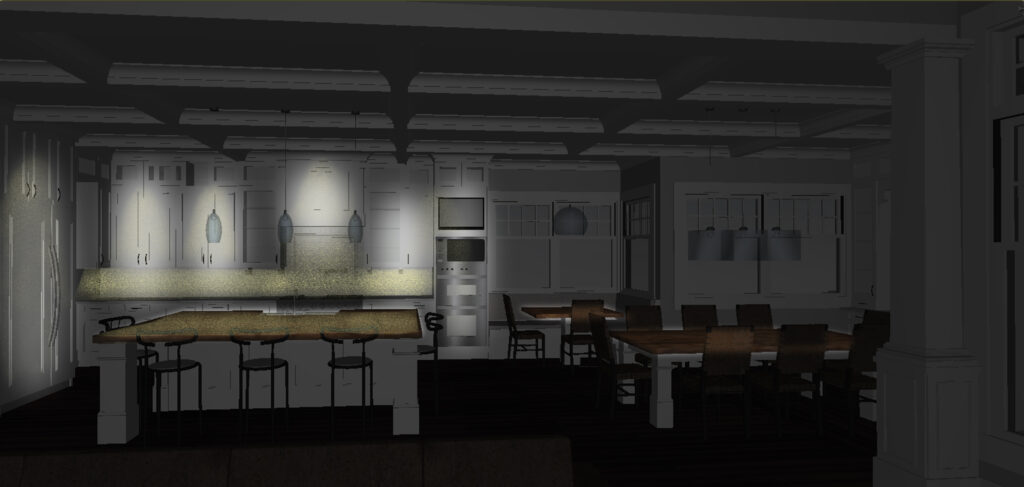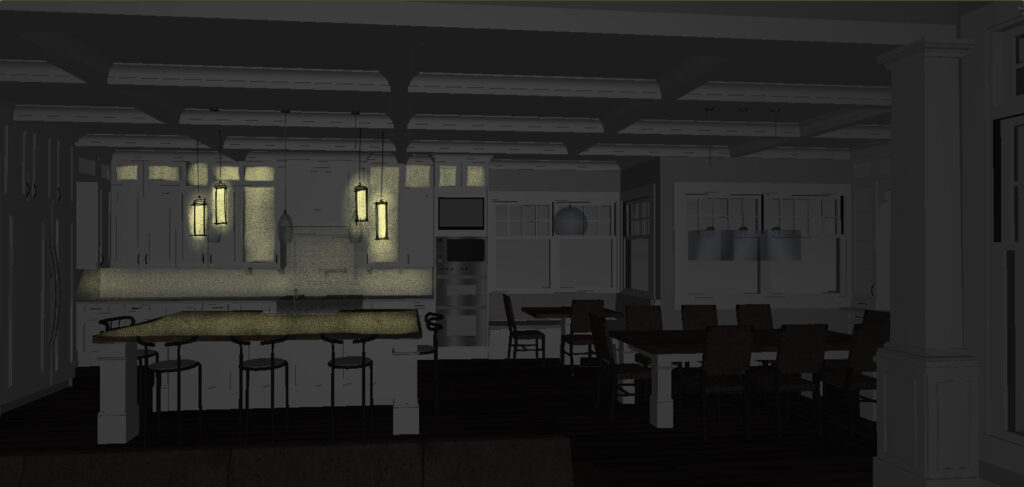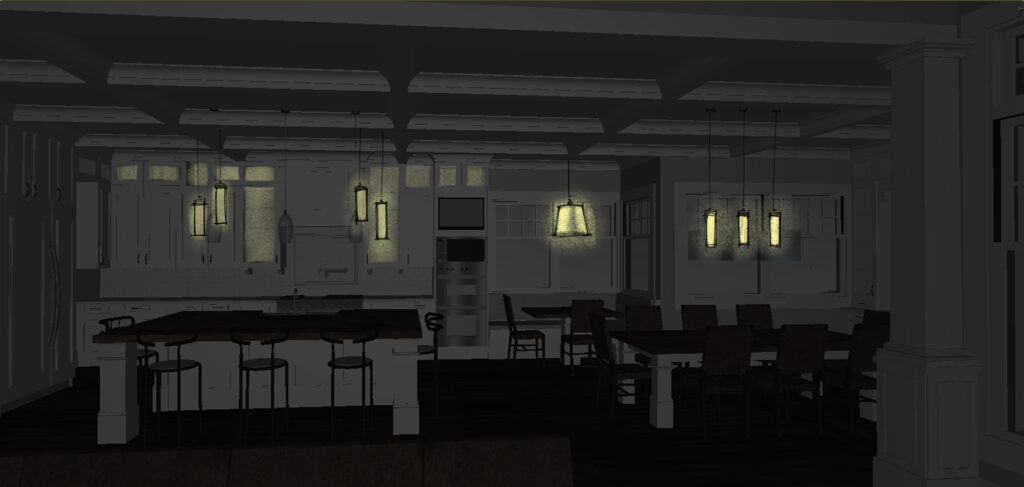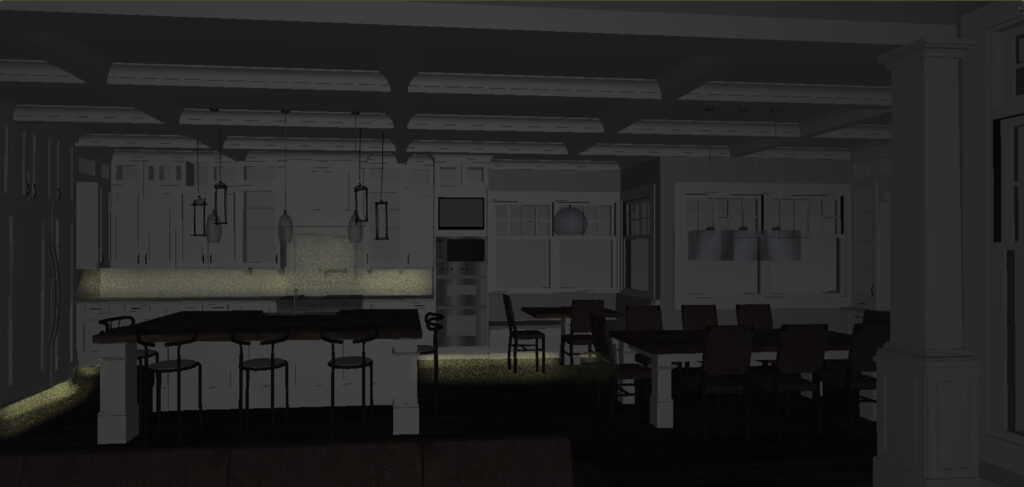Adapting to changing lighting conditions is so critical to the human visual experience that we have a body part designed just for this task- the iris. Each eye has a constantly changing aperture- opening- that allows us to see easily at sunset and at mid-day. The iris allows us to appreciate a candle-lit dinner and a live professional sporting event. We are built for light that changes.
Yet somewhere along the way, the idea that light must never change became an integral part of architectural lighting. Nice static lighting is like buying a beautiful new car without an engine. It might look nice in the driveway, but oh what missed potential!
Artificial lighting systems can also be dynamic, responding to changing needs, incorporating scientific discoveries, creating beauty and enhancing quality of life. None of this is possible with an unchanging lighting system.
Simply adding dimmers, multiple switches, or smart light bulbs to existing layers of light can often satisfy the need for dynamic control over light. There are four primary reasons to incorporate light for change: changing tasks, changing times, changing eyes, and changing moods.

Changing Tasks
A kitchen plays host to a number of tasks, each with unique lighting requirements. Making coffee in the morning, cleaning the counters after breakfast, cooking dinner in the late afternoon, chopping vegetables, decorating cookies, or fixing a late night snack all require light, but not necessarily the same level or type of light. The addition of dimmers to most lights in the kitchen made adaptation possible, providing flexibility in the space.
This need for light that adapts to changing tasks occurs in most rooms of our house. Making the bed, for example, requires much more light than reading a book at bedtime. Playing board games in the living room requires a different amount of light than watching a movie. If your lighting does not adapt, over time your spaces can begin to feel cold and institutional, like a hospital waiting room.

Changing Times
Daylight passing through windows provides our best clue to what is happening outside, and our eyes naturally adjust to compensate for the brightness only the sun can provide. After dark, our eyes adapt to lower light levels, and our lighting should also change. Newer smart products shift over the course of day in both brightness and color temperature, becoming dimmer and warmer as bedtime approaches. This is light that adapts to changing times, and it is key to keeping our circadian rhythm in sync with nature. If we have static, unchanging light inside from wake to sleep, we may be getting too much light at night and not enough in the earlier parts of the day. Adding in brighter bulbs on a dimmer can help deliver both.

Changing Eyes
As we age, our eyes lose elasticity and clarity, ultimately requiring increasing amounts of light to see well. I need twice as much light as my 16-year-old son, and I need half as much as my retired parents in their mid seventies. This is important in all rooms of the house, but perhaps more so in the kitchen where knives and burning-hot pans are in regular use. If a kitchen is lit without adaptability- especially the possibility of making the work surfaces brighter- it may become dangerous for us as we age. Dimmers and controls help bridge the difference, offering less light now and more light later with the touch of a switch.

Changing Moods
Have you ever been in a nice restaurant as happy hour ends, and noticed when a manager dimmed all the lights? In part, this is because our eyes need less light later in the day and the restaurant should adapt to us (not the other way around). But it also signals a change in mood, in atmosphere, to a more relaxed environment. Our moods change throughout the day and throughout the week, and we can use light to compliment and even counteract our feelings.
Often, the end of happy hour is also when candles or oil lamps are lit on the tables. This is not because the restaurant wants to save electricity, but rather because they want to further change the mood. A candlelit dinner is synonymous with a romantic dinner, because the mood encouraged by candlelight is much different than the mood conveyed in a shopping mall food court. In a food court, where the mall encourages you to eat quickly, vacate your table for someone else, and return to shopping, bright light enhances an energetic mood to keep you moving.
The fourth promise of the gift of light is that light can help us change better. You’ve just read why. I’d love to hear your questions about how you might enable this promise in your home!
